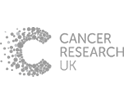
By Petra Nordqvist, Leah Gilman and Hazel Burke
In common parlance, being an egg or sperm donor means donating anonymously via a clinic or bank. This group of donors are often referred to as ‘ID-release donors’ because, since 2005, their identity can be released to any child conceived via their donation when they turn 18.
However, alongside ID-release donation, there is also the option of ‘known’ donation. This is where men and women agree to act as donors for friends, family members or people they meet on social media or on donor matching platforms.
Official UK bodies such as the HFEA and the SEED Trust tend to discourage any known donation that circumvents the use of a licensed clinic. Nevertheless, it has become a widespread practice, with the internet playing an increasingly important role in donors and recipients finding each other.
As sociologists at the University of Manchester, our research on the experiences of being an egg or sperm donor has given us insights into the ever...
Want to see the rest of this article?
Would you like to see the rest of this article and all the other benefits that Issues Online can provide with?
- Useful related articles
- Video and multimedia references
- Statistical information and reference material
- Glossary of terms
- Key Facts and figures
- Related assignments
- Resource material and websites

 Can ‘known’ donors show us the future of egg and sperm donation?
Can ‘known’ donors show us the future of egg and sperm donation?








